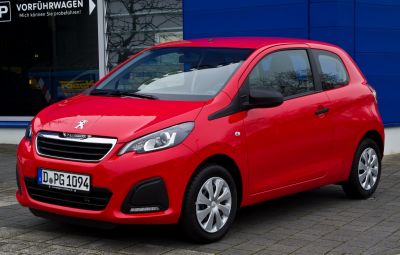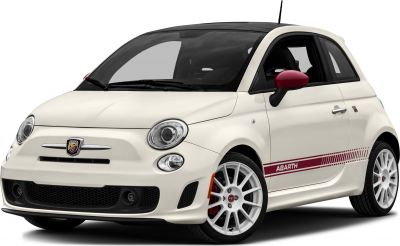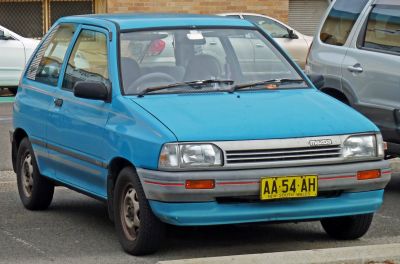 1997 Seat Arosa (6H) Dimensions, Size & Specs
1997 Seat Arosa (6H) Dimensions, Size & SpecsMeasurements of the 1997 Seat Arosa, engineered for optimal performance and comfort
| Dimensions | |
|---|---|
| Length: | 3536 mm139.2 in11.6 ft |
| Width: | 1639 mm64.5 in5.4 ft |
| Height: | 1480 mm58.3 in4.9 ft |
| Trunk Capacity: | 130 liter4.6 cu ft |
| Trunk Capacity (Max): | 790 liter27.9 cu ft |
| Weight Specifications | |
| Curb Weight: | 880-955 kg1940-2105 lbs |
| Maximal permitted Weight: | 1360-1445 kg2998-3186 lbs |
| Tire Specifications | |
| Rims Size: |
|
| Tire Sizes: |
|
The Seat Arosa (6H), produced between 1997 and 2000, is a compact hatchback designed for urban driving with efficient space utilization and lightweight construction. Measuring 3536 mm (139.3 inches) in length, 1639 mm (64.5 inches) in width, and 1480 mm (58.3 inches) in height, the Arosa is easy to maneuver and park in tight city environments. Its curb weight ranges from 880 to 955 kg (1940 to 2105 lbs), contributing to its nimble handling and fuel efficiency. The maximum weight capacity varies between 1360 and 1445 kg (2998 to 3187 lbs), allowing it to carry passengers and cargo comfortably for its size category.
Despite its compact exterior, the Arosa offers practical utility with a luggage capacity of 130 liters (4.6 cubic feet), which expands to an impressive 790 liters (27.9 cubic feet) when the rear seats are folded down. This flexibility makes it suitable for everyday errands as well as longer trips requiring extra storage. Equipped with 13-inch rims and tire sizes including 155/70 R13 and 175/65 R13, the vehicle balances ride comfort with responsive road grip.
As a small hatchback from the late 1990s, the Seat Arosa (6H) stands out for providing a blend of compact dimensions, light weight, and adaptable cargo space, making it a practical choice for city dwellers and those seeking an economical yet versatile vehicle. Its size and specifications make it comparable to other European city cars of the era, emphasizing ease of use and efficient space management.
Discover the standout features that make the 1997 Seat Arosa a leader in its class
Have a question? Please check our knowledgebase first.
The Seat Arosa (6H) has a compact hatchback design with a length of 3536 mm (approximately 139.3 inches), a width of 1639 mm (about 64.5 inches), and a height of 1480 mm (around 58.3 inches). This overall size reflects its small city car classification, making it maneuverable and suitable for urban environments.
The Seat Arosa (6H) weighs between 880 and 955 kg (1940 to 2105 lbs) when empty, commonly referred to as curb weight. Its maximum weight, including passengers and cargo, ranges from 1360 to 1445 kg (2998 to 3186 lbs). This lightweight construction contributes to nimble handling and efficient fuel consumption, enhancing its appeal as a city-friendly vehicle.
With rear seats in place, the Seat Arosa provides 130 liters (about 4.6 cubic feet) of luggage capacity, suitable for small bags or groceries. Folding the rear seats down significantly expands the cargo area to 790 liters (approximately 27.9 cubic feet), allowing for larger items or increased storage space, which is practical for a car of its size.
Given its compact dimensions—length of 3536 mm (139.3 inches), width of 1639 mm (64.5 inches), and height of 1480 mm (58.3 inches)—the Seat Arosa fits comfortably in a standard residential garage. Most garages accommodate vehicles up to roughly 6 meters long and 2.5 meters wide, so parking and maneuvering the Arosa inside is easy, making it an excellent option for urban dwellers.
The Seat Arosa comes with 13-inch rims fitted with tire sizes including 155/70R13, 175/65R13, and 155/70R13. The smaller rim diameter and higher tire profile generally contribute to a comfortable ride by better absorbing road irregularities, and also support agile handling in tight city conditions.
With a width of 1639 mm (64.5 inches), the Seat Arosa (6H) is quite typical for its city hatchback class in the late 1990s. It provides enough cabin space for four passengers while maintaining a narrow profile that aids ease of parking and driving in congested urban areas. Compared to competitors like the Fiat Seicento or Volkswagen Lupo, its width is very comparable.
The Seat Arosa (6H) is closely related to the Volkswagen Lupo, sharing much of its underpinnings, dimensions, and weight. Compared to its VW counterpart, the Arosa offers similar compact dimensions—length around 3536 mm and curb weight between 880 and 955 kg. This makes it comparable in agility and practicality, though the Arosa typically comes at a more accessible price point.
Standing at 1480 mm (58.3 inches) tall, the Seat Arosa offers a relatively low profile that helps with aerodynamic efficiency while still providing sufficient interior headroom for passengers. The height strikes a balance that supports good driver visibility over other vehicles and contributes to a sportier aesthetic without compromising comfort.
Despite its small overall size, the Seat Arosa is designed to comfortably seat four adults with a reasonably spacious cabin for a city hatchback. Its width of 1639 mm supports adequate shoulder room, while the height of 1480 mm ensures headroom is sufficient. However, legroom is more limited typical of cars in this segment, making it ideal for short urban trips rather than long highway cruises.
Absolutely, the Seat Arosa (6H) is ideal for urban driving due to its compact size—length 3536 mm, width 1639 mm, and relatively low curb weight. Its small dimensions enable easy maneuvering and parking in tight spaces common in cities. The light weight contributes to fuel efficiency and nimble handling, making it competitive with similar hatchbacks like the Volkswagen Lupo or Fiat Seicento during the late 1990s.
Discover similar sized cars.

| Production: | 2018-present |
|---|---|
| Model Year: | 2018 |
| Length: | 3475 mm136.8 in |
| Width: | 1884 mm74.2 in |
| Height: | 1460 mm57.5 in |

| Production: | 2014-present |
|---|---|
| Model Year: | 2014 |
| Length: | 3475 mm136.8 in |
| Width: | 1884 mm74.2 in |
| Height: | 1460 mm57.5 in |

| Production: | 2010-2015 |
|---|---|
| Model Year: | 2007 |
| Length: | 3546 mm139.6 in |
| Width: | 1627 mm64.1 in |
| Height: | 1488 mm58.6 in |

| Production: | 2013-2016 |
|---|---|
| Model Year: | 2013 |
| Length: | 3540 mm139.4 in |
| Width: | 1910 mm75.2 in |
| Height: | 1498 mm59.0 in |

| Production: | 2013-2016 |
|---|---|
| Model Year: | 2013 |
| Length: | 3563 mm140.3 in |
| Width: | 1649 mm64.9 in |
| Height: | 1516 mm59.7 in |

| Production: | 2011-2016 |
|---|---|
| Model Year: | 2012 |
| Length: | 3540 mm139.4 in |
| Width: | 1645 mm64.8 in |
| Height: | 1489 mm58.6 in |

| Production: | 1988-1991 |
|---|---|
| Model Year: | 1988 |
| Length: | 3475 mm136.8 in |
| Width: | 1605 mm63.2 in |
| Height: | 1450 mm57.1 in |

| Production: | 2019-2021 |
|---|---|
| Model Year: | 2020 |
| Length: | 3556 mm140.0 in |
| Width: | 1910 mm75.2 in |
| Height: | 1481 mm58.3 in |
